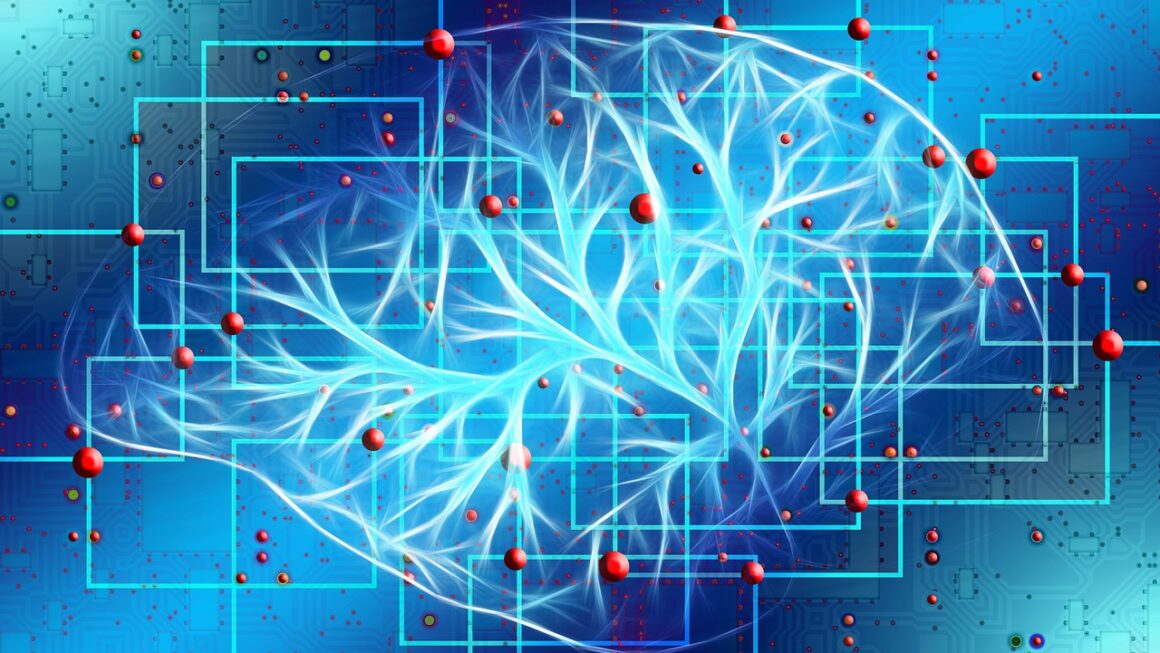Neural networks, inspired by the intricate web of neurons in the human brain, are rapidly transforming industries and revolutionizing how we approach complex problems. From powering personalized recommendations on Netflix to enabling self-driving cars, these powerful algorithms are at the forefront of artificial intelligence. This blog post dives deep into the fascinating world of neural networks, exploring their structure, functionality, applications, and the exciting future they hold.
Understanding Neural Network Basics
Neural networks are a set of algorithms, modeled loosely after the human brain, that are designed to recognize patterns. They interpret sensory data through a kind of machine perception, labeling or clustering raw input. This allows them to recognize and classify images, decipher speech, and much more.
The Building Blocks: Neurons and Connections
At the core of every neural network lies the artificial neuron, also called a node. These nodes are interconnected in layers to form a network.
- Nodes (Neurons): These receive input, process it, and produce an output. Each node applies a weighted sum to its inputs and passes the result through an activation function.
- Connections (Edges): These represent the connections between neurons in different layers. Each connection has a weight associated with it, representing the strength of the connection.
Layers: Input, Hidden, and Output
A neural network typically consists of three types of layers:
- Input Layer: Receives the raw data. For example, in an image recognition task, this layer would represent the pixel values of the image.
- Hidden Layer(s): Performs complex computations on the input data. A network can have multiple hidden layers, allowing it to learn more intricate patterns. The more layers, the more complex features it can learn, but also the more computationally expensive it becomes.
- Output Layer: Produces the final result. For example, in an image classification task, this layer might output the probability of the image belonging to different categories (e.g., cat, dog, bird).
How Learning Happens: Forward Propagation and Backpropagation
Neural networks learn through a process called training, which involves adjusting the weights of the connections between neurons to minimize the difference between the network’s output and the desired output.
- Forward Propagation: The input data is fed through the network, and the output is calculated.
- Backpropagation: The error between the network’s output and the desired output is calculated, and the weights are adjusted to reduce this error. This process is repeated iteratively until the network learns to produce accurate results. This adjustment uses gradient descent, essentially finding the direction of steepest descent on an error surface.
- Example: Imagine training a neural network to recognize handwritten digits. During forward propagation, an image of a ‘7’ is fed into the input layer. The data flows through the hidden layers, and the output layer might incorrectly predict it as an ‘8’. Backpropagation then calculates the error and adjusts the weights to make the network more likely to correctly classify it as a ‘7’ in the future.
Types of Neural Networks
There are various types of neural networks, each with its own architecture and strengths, suited for different tasks.
Feedforward Neural Networks (FFNN)
- The simplest type, where data flows in one direction: from the input layer, through the hidden layers, to the output layer.
- No loops or cycles are allowed.
- Suitable for tasks like classification and regression.
Convolutional Neural Networks (CNN)
- Specifically designed for processing image and video data.
- Use convolutional layers to automatically learn spatial hierarchies of features from images.
- Commonly used in image recognition, object detection, and image segmentation.
Recurrent Neural Networks (RNN)
- Designed to handle sequential data, such as text or time series.
- Have feedback connections, allowing them to maintain a “memory” of past inputs.
- Used in natural language processing (NLP), machine translation, and speech recognition.
- Long Short-Term Memory (LSTM) and Gated Recurrent Units (GRU) are popular variations that address the vanishing gradient problem in traditional RNNs.
Generative Adversarial Networks (GAN)
- Consist of two neural networks: a generator and a discriminator.
- The generator creates new data instances, while the discriminator evaluates their authenticity.
- Used for image generation, text generation, and style transfer.
- Example: A CNN could be used to identify different species of plants from images, while an RNN might be used to predict stock prices based on historical data.
Practical Applications of Neural Networks
Neural networks are being used in a wide range of industries and applications.
Image and Video Recognition
- Object detection: Identifying and locating objects in images or videos (e.g., self-driving cars identifying pedestrians and other vehicles).
- Facial recognition: Identifying individuals from their faces (e.g., unlocking smartphones or enhancing security systems).
- Medical imaging: Assisting in the diagnosis of diseases from medical images (e.g., detecting tumors in X-rays or MRIs).
Natural Language Processing (NLP)
- Machine translation: Translating text from one language to another.
- Chatbots: Providing automated customer service and support.
- Sentiment analysis: Determining the emotional tone of text (e.g., analyzing customer reviews).
- Text Summarization: Automatically generating concise summaries of longer texts.
Predictive Analytics
- Fraud detection: Identifying fraudulent transactions (e.g., in credit card processing).
- Sales forecasting: Predicting future sales based on historical data.
- Risk assessment: Assessing the risk of loan defaults or insurance claims.
- Example: In healthcare, neural networks are being used to predict patient readmission rates, allowing hospitals to improve patient care and reduce costs. Statistics show that machine learning models can achieve up to 80% accuracy in predicting hospital readmissions.
Building and Training Your Own Neural Network
While the math behind neural networks can be complex, many tools and libraries make it accessible to build and train your own.
Popular Frameworks
- TensorFlow: A powerful and versatile framework developed by Google.
- Keras: A high-level API for building and training neural networks, often used on top of TensorFlow or other backends.
- PyTorch: A framework developed by Facebook, known for its flexibility and dynamic computation graph.
Key Steps in Training
- Tip: Start with simpler models and gradually increase complexity as needed. Monitoring training progress and validation accuracy is crucial for preventing overfitting. Also, data augmentation can significantly improve the performance of image-based models.
Conclusion
Neural networks are a transformative technology with the potential to revolutionize various aspects of our lives. By understanding their fundamental principles, exploring different types of architectures, and leveraging powerful frameworks, you can unlock the power of neural networks to solve complex problems and create innovative solutions. The field of neural networks is constantly evolving, so continuous learning and experimentation are key to staying at the forefront of this exciting area of artificial intelligence.




